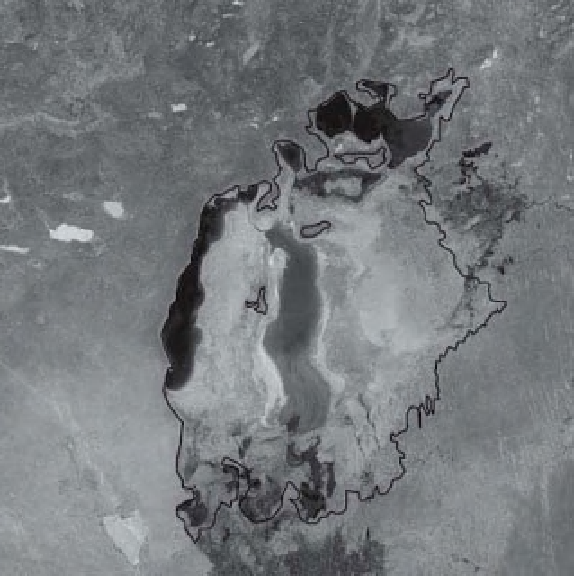Geoscience Reference
In-Depth Information
A
B
Figure 11-6.
A. Map of the Aral Sea region and drainage in central Asia. Produced by A. Dailey. Map made with
data from Natural Earth, Global Administrative Areas, and World Wildlife Fund Terrestrial Ecoregions Database
(Olson et al. 2001). Accessed online
<
www.naturalearthdata.com
>
<
http://www.gadm.org/
>
and
<
http://
www.worldwildlife.org/science/data/item6373.html
>
February 2011. B. Dramatic Terra MODIS image from 26 August
2010 showing the desiccation of the Aral Sea due to water diversion schemes on the Amu Darya and Syr Darya
(see Color Plate 11-6). The deltas of the Amu Darya (southern shore) and Syr Darya (northeastern shore) are visible
on the image in green. The 1960s shoreline of the sea is marked. Image adapted from NASA's Earth Observatory.
Accessed online
<
=
>
http://earthobservatory.nasa.gov/IOTD/view.php?id
46685
October 2010.
11.4 Economic services
11.4.1 Extractive industries
Extractive activities and industries that rely on
wetland resources include hunting and trap-
ping, i ber and building materials, wetland agri-
culture, cattle ranching, i sheries, commercial
aquaculture, pearl production, forestry, hydro-
electric energy, peat mining, and salt production
(Fig. 11-7), among others. Industry dominance
within any given wetland site depends on a
number of factors. These may include the fol-
lowing issues:
Wetlands provide obvious economic benei ts
to society, and their contributions to sustained
human settlement and expansion are well
documented. Their economic contributions fall
largely within the primary or extractive sector
of the economy, but they also contribute to
recreation, tourism, transportation, and the
services industry in general. Increasing popu-
lation pressures and the rising demand for
food products, materials, and economic devel-
opment have led to the over-exploitation of a
number of wetland sites around the world.
Such cases are only compounded by the poli-
tics and unequal power relations of competing
interests encroaching upon these dwindling
resources.
• a region's development status
• its history of resource use
• external market factors
• local demand for products
• policies governing resource use







